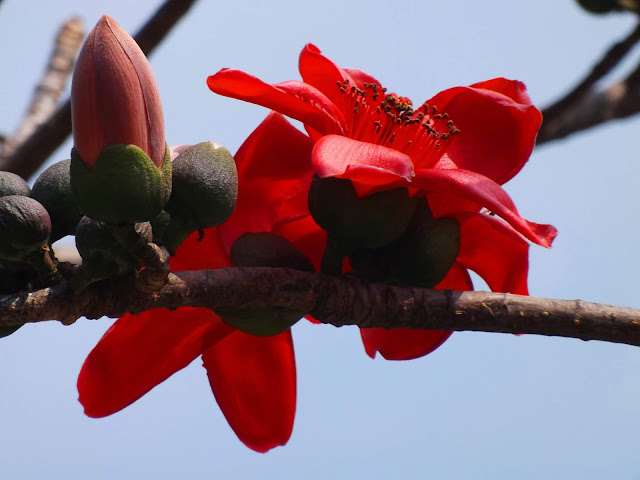Raj oshok or Pride of Burma, Amherstia nobilis
Raj oshok or Pride of Burma (Amherstia nobilis, family: Caesalpiniaceae) is an evergreen medium-sized tree with branches, attaining a height of 10-15 m. The slow-growing tree looks like its family member Ashoka. The plant is originated in Myanmar. It is found in the Hill Tracts of Chattogram in Bangladesh as well as some countries of Southeast Asia. It is grown in gardens, parks, botanical gardens and along roadsides for its extraordinary shape of flowers.
Common names: Queen of flowers, Queen of flowering trees, Burma flower, Amherstia, Shokrey.
Leaves are compound, rachis 30-45 cm long. Leaflet is lanceolate, 10-15 cm long. Young leaves with various beautiful shades of pink, copper, mauve or purple hanging loosely from the end of branches, turn bright green on becoming firm.
Fruits are pods, 8-12 cm long and 3 cm wide. Young pods are vivid red. Sedds 4-5. Propagation of the plant is caused by seeds and air layering. There is no guarantee that it will bear fruits every year and no guarantee that seedlings will grow the seeds!. The plant grows well in moist soil and in partial shade.
It is becoming more and more limited in its own habitat. Therefore, as an ornamental tree, it should be planted in roadside, gardens and parks all over the country.






Comments
Post a Comment